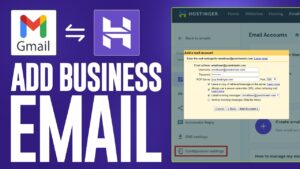
Are you looking to uninstall WordPress from your Hostinger cPanel? Whether you’re switching to a different platform or simply want to start fresh, removing WordPress from your hosting account is a straightforward process. In this guide, we’ll walk you through the steps to uninstall WordPress from Hostinger’s cPanel, also known as hPanel, in 2023.
Before we begin, make sure you have access to your Hostinger account and are logged into your cPanel dashboard. If you’re ready, let’s get started!
Step 1: Access Your Hostinger cPanel
To uninstall WordPress from your Hostinger account, you’ll need to access your cPanel dashboard. Log in to your Hostinger account, navigate to the hosting section, and click on the “Manage” button next to your hosting plan. From there, locate and click on the “hPanel” button to access your cPanel dashboard.
Step 2: Locate the WordPress Installation
Once you’re in your cPanel dashboard, you’ll need to locate the WordPress installation that you want to uninstall. Look for the “File Manager” icon and click on it to open the file management tool.
Navigate to the directory where your WordPress files are located. Typically, WordPress files are stored in the “public_html” folder if it’s the primary installation on your domain. If you have WordPress installed in a subdirectory, locate that specific folder instead.
Step 3: Delete WordPress Files
To uninstall WordPress, you’ll need to delete all the files associated with your WordPress installation. Select all the WordPress files and folders, right-click, and choose the “Delete” option. Confirm the deletion when prompted.
Be cautious when deleting files, as this action is irreversible. Make sure you have a backup of your website if you want to preserve any data before proceeding with the deletion.
Step 4: Drop the WordPress Database
In addition to deleting the WordPress files, you’ll also need to drop the WordPress database associated with your installation. To do this, return to your cPanel dashboard and locate the “MySQL Databases” icon. Click on it to access the database management tool.
Find the database that corresponds to your WordPress installation. Select the database, then click on the “Delete Database” option to drop it. Confirm the deletion when prompted.
Step 5: Remove Database User
After dropping the database, you’ll also need to remove the database user associated with the WordPress installation. Locate the “MySQL Users” section in your c


